National Opera and Ballet Theatre
The largest theater in Albania. The theater is located in Skanderbeg square. It hosts music and dance performances from all the world. The theater was founded on 1953.
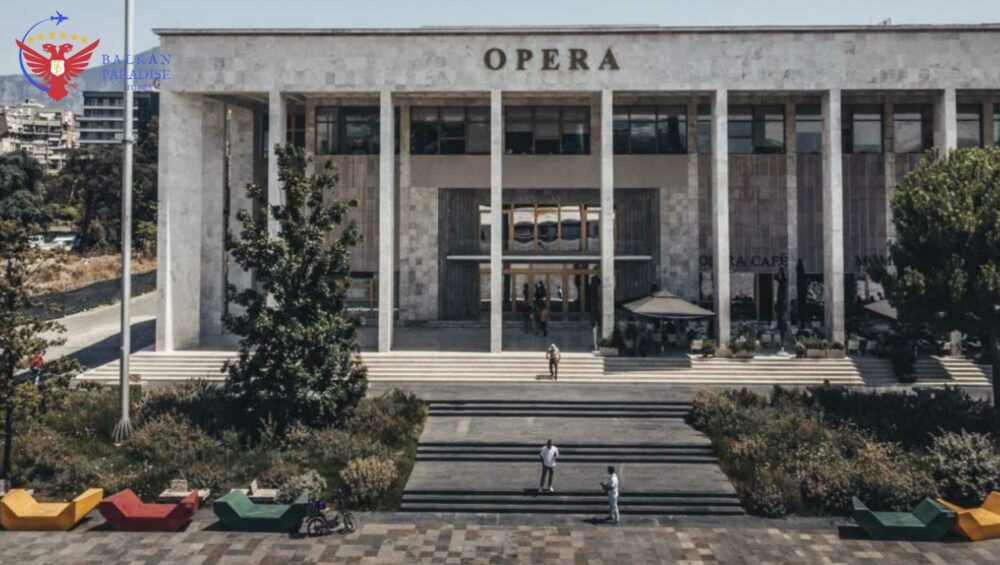
The largest theater in Albania. The theater is located in Skanderbeg square. It hosts music and dance performances from all the world. The theater was founded on 1953.
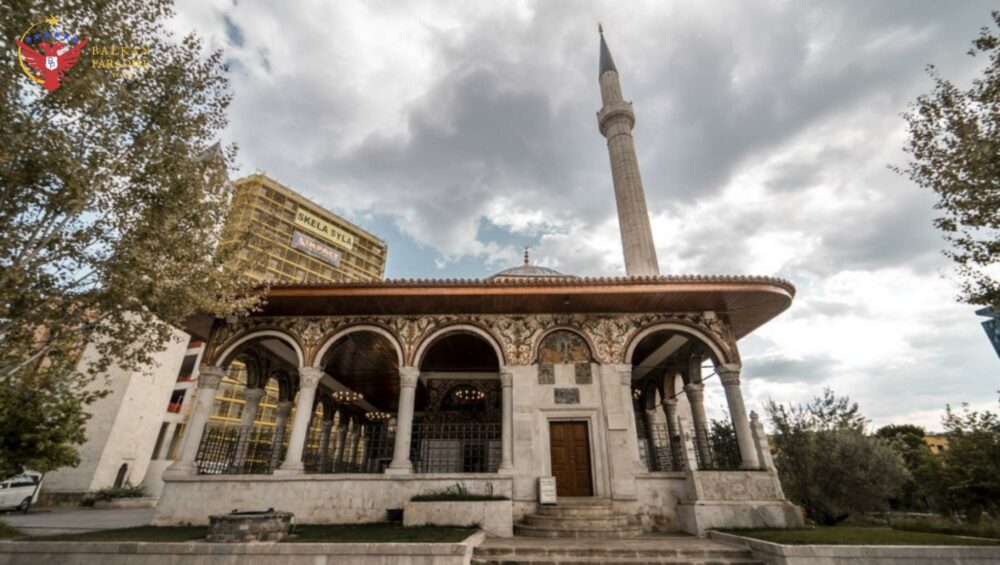
The mosque was constructed in 1791 by Molle Bey, and it was finished in 1819 by his son Haxhi Ethem Bey, grand-grandson of Sulejman Pasha. In front of mosque was the old Bazaar.
The Mosque today, consists of an architectural complex together with the Clock Tower of Tirana. Tours of the mosque are given daily, not during prayer times.
The Et’hem Bey Mosque is composed by prayer hall, a portico and the minaret. The mosque is a squared plan and is constructed in a unique volume. It is covered with dome and the dome is semi-spherical and has no windows. Most of its walls are glass.
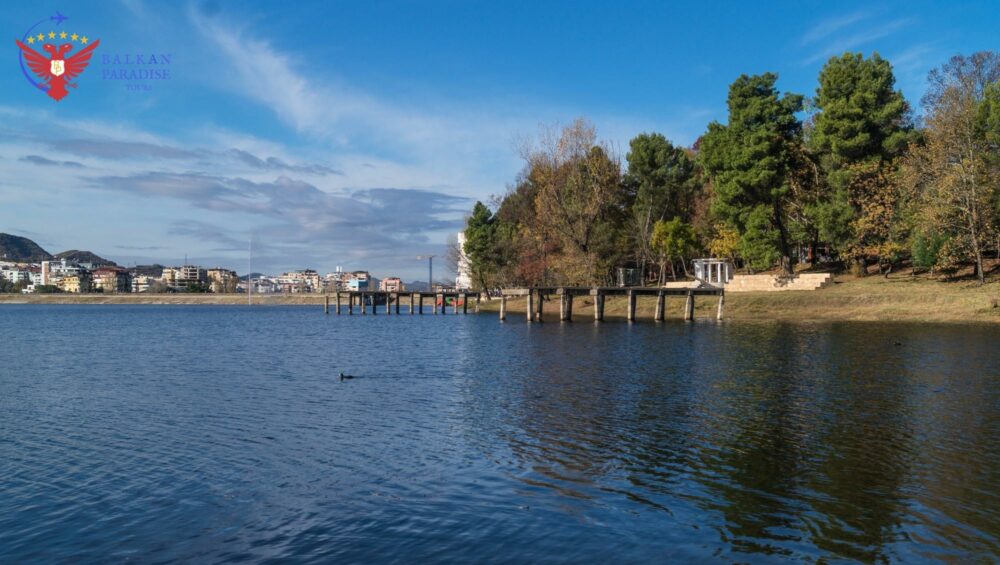
Includes the artificial lake which was built in 1955 by some volunteers, surrounded by a grand park. This area has a rich biodiversity of trees, as well as many species of aquatic species.
The park offers for all generations the opportunity to have an amazing time as there is a children’s playground, a sports runway, bicycle riding, cafes, and restaurants. The park offers cultural, religious and historical shows.
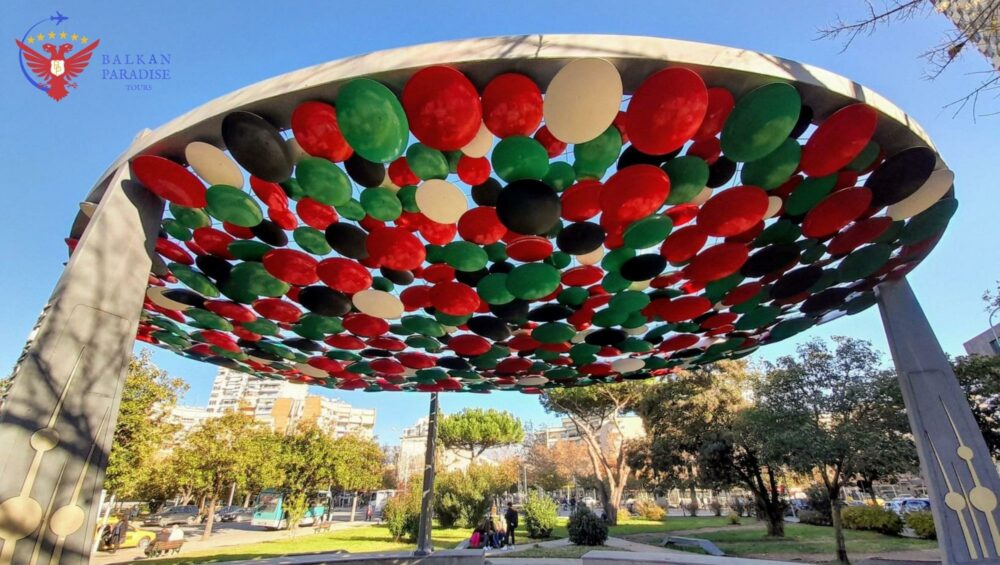
This monument has the flag colors of Kuwait’s state to remember the friendship and cooperation between the two countries. It is located in front of the National Library, was donated to the Albanian citizens by the friend state, Kuwait, who has been investing in the development of Albania since 1993.
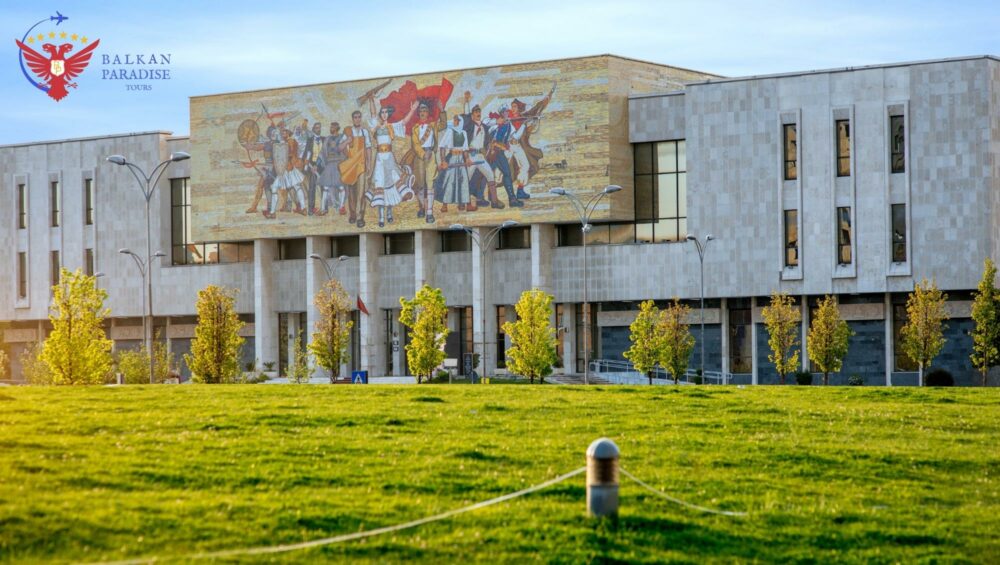
The museum is located in Skanderbeg Square. The museum is considered as the largest and most famous museum in Albania because it contains the historical facts and cultural heritage of Albanians from the 4th millennium BC until the second half of the 20th century. About 5,000 objects on display in an area of 18,000 square meters provide visitors with the origins and past evidence of the country.
The museum has eight wings according to the Albanian historical eras
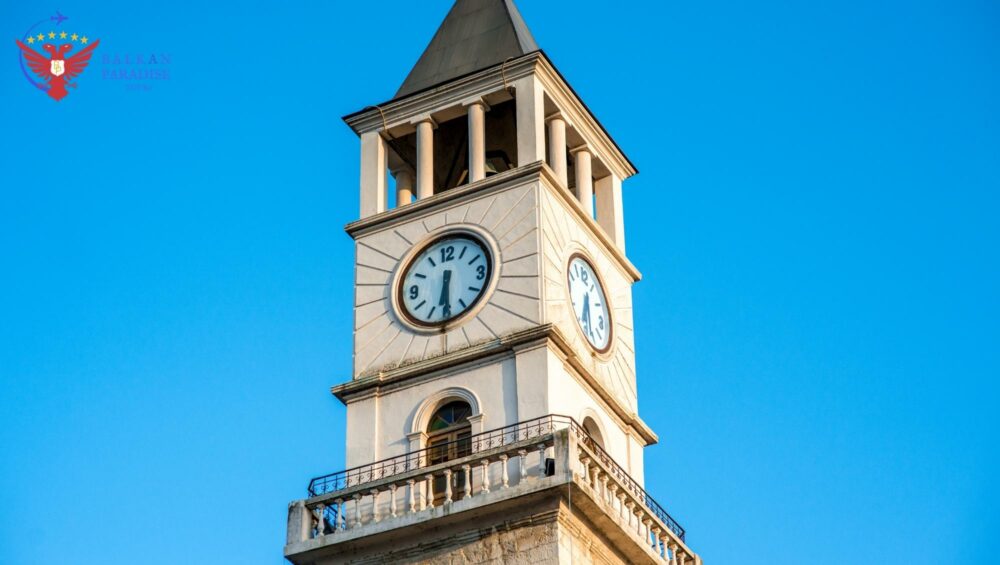
The tower was built in 1822, it is considered a first-class cultural landmark. The tower is located in the center of Tirana and is the symbol of the municipality of Tirana.
It has a unique Islamic architecture, and the spiral staircase offers a beautiful view of Tirana from 35 meters high.
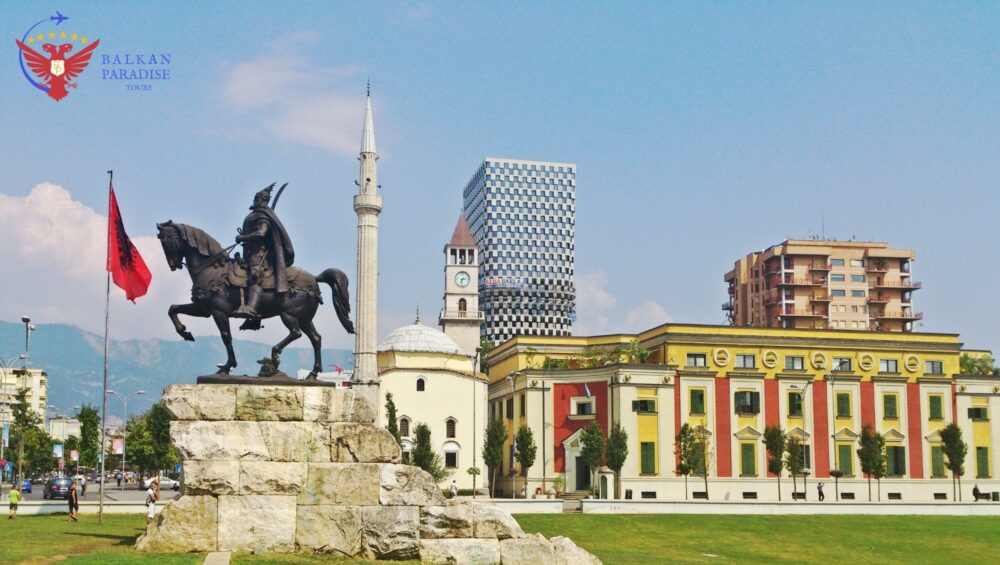
It covers an area of 40,000 square meters in the center of Tirana after the national hero George Kastriot. In 1968, to commemorate the 500th anniversary of his death, an eleven-meter-high equestrian statue was settled up on the south side of the square.
Skenderbeg Square is of special interest as other state-run cultural attractions such as the Et’hem Bey Mosque, The Clock Tower, The National Library, the National Museum, The National Opera and Ballet Theatre, and the Ministries.
Now the square is paved with multicolored tiles from different parts of the country. There are about 100 fountains, and behind the Skenderbeg monument there is a 30 square meter green area..
Awards
Skenderbeg Square won the “Best Public Space” award for 2018 in a competition in Barcelona involving 280 projects judged by an international jury.
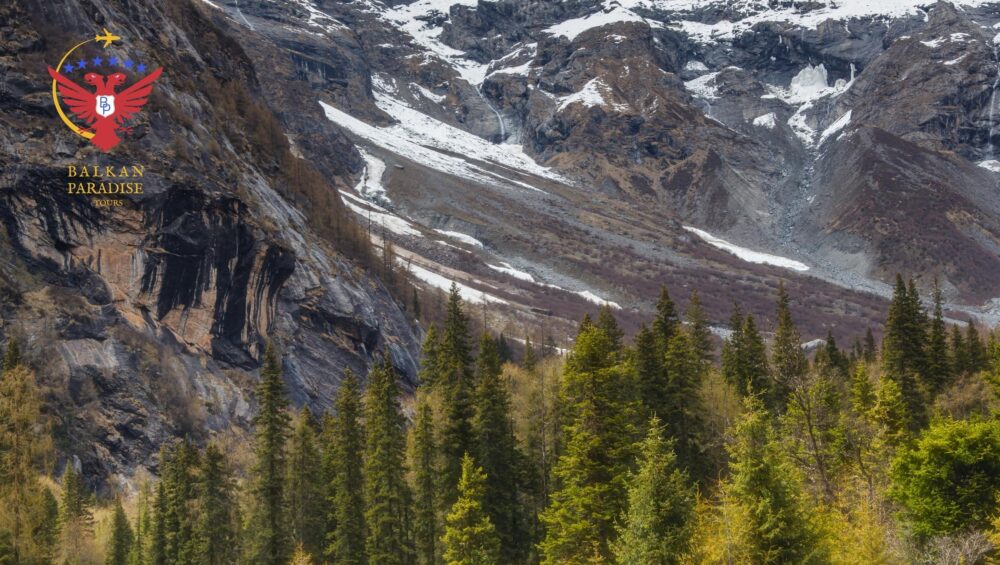
“Maiden’s Mountain” is a symbol of intense love,
The mountain is a peak located in the northeast of Elbasan city and is shrouded in a legend that has become blurred with the passage of time. It is said that the mountain is a symbol of passionate love, and the story behind this name has been kept hidden by the villagers of Polis.
According to an old man in the village, the legend goes as follows:
Two young people fell in love with each other, but their love was forbidden as the boy was poor, and the girl was the daughter of a wealthy man. The only way for them to be together was through suicide. However, an elder in the village decided to help the young couple, but his decision burdened the boy, as men subject to women’s whims were highly punished at that time. The elder set a condition that the boy had to carry his girlfriend in his arms from the foot of the mountain to the top without stopping. The young man agreed to the condition, and the elders of the village gathered to witness the implementation of the condition. If the boy succeeded, he would be allowed to marry the girl.
The boy started climbing, and in the first few meters, he appeared to be flying, but his ascent did not last long. The elders watched anxiously as the boy struggled to make his way up, encouraging him to keep going. Eventually, he made it to the top, but the great strain had caused his heart to stop beating. In honor of her lover’s supreme sacrifice, the girl decided to follow in his footsteps and jumped off the steep mountain peak, falling about 700 meters into the precipice.
This story of unconditioned love and ultimate sacrifice has been passed down from generation to generation and will forever be remembered as a symbol of true love. The legend of “Maiden’s Mountain” will continue to captivate the imaginations of those who hear it for generations to come.
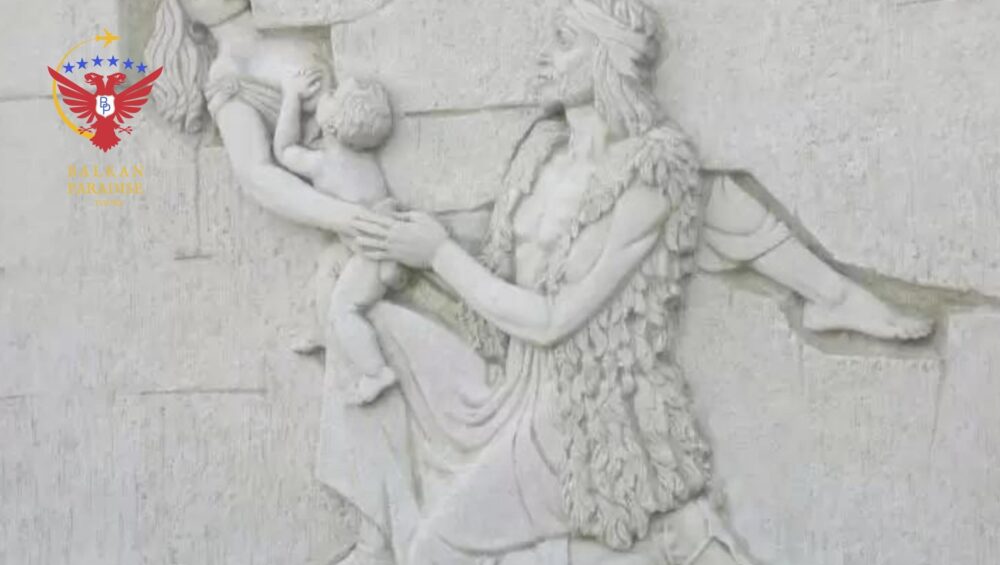
The castle of Rozafa, located above the Buna river and the city of Shkodra, has a long and tumultuous history. Its origins are shrouded in mystery, dating back to the ancient Illyrian tribes who once inhabited the area. Over the centuries, the castle has been owned and occupied by various foreign powers, including the Romans, Slavs, Normans, Venetians, and Turks, all leaving their mark on the castle and the surrounding landscape.
Legend has it that the castle’s construction was plagued by mysterious structural problems, with the walls continually collapsing despite the hard work of three brothers. A wise old man appeared and offered a solution, which involved burying the first wife who brought lunch to her husband in the walls of the castle. However, the two elder brothers broke their promise and revealed the plan to their wives, who found excuses not to bring lunch. Only the youngest brother’s wife, named Rozafa, was unaware of the plan and agreed to bring lunch, only to learn of her sacrifice upon arrival. She agreed to be buried in the walls of the castle but requested that three holes be left so that she could continue to breastfeed her newborn son, caress him, and move his cradle. The castle never collapsed again, and the legend of Rozafa lives on to this day.
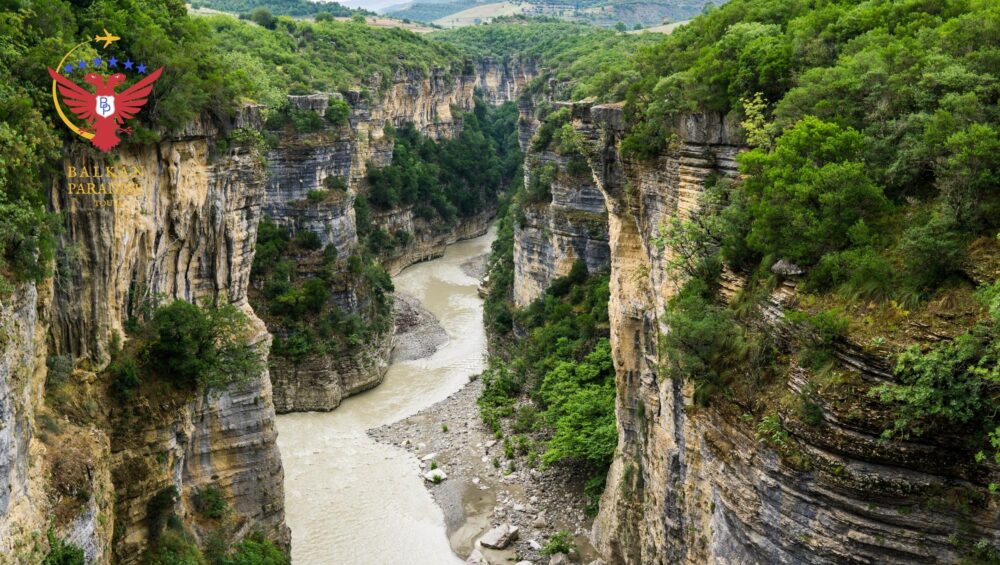
It is precisely the strange beauty and interesting shape of this valley that made it possible to create legends about it. Many of these legends have been preserved to this day.
The legend recounts the story of a bride who was being forced to marry against her will, adhering to old customs. During the journey back to the groom’s village after the wedding, the unhappy bride confided her feelings, but nobody paid heed to her distress.
Determined to escape, she turned to the rock in the canyon and prayed for its help. Addressing the rock, she pleaded: “Open up and save me from this embarrassment.” Miraculously, the rock responded and revealed a crevice. The bride leapt off her horse and took refuge in the opening, never returning to her former life.
The crevice soon became a site of pilgrimage for childless brides seeking divine assistance.
The legend is about the unique formations that have been created by the erosion of limestone in the water. These formations resemble the shape of a horse’s and bat’s footprints and are located close to the village of Dores, just 5 km away from Çorovoda town.
According to the legend, these footprints belong to Saint Abaz Ali, who traveled from Karbala to Tomor on his white horse.
As he flew, his horse left imprints on the Kajca plank before he disappeared into Mount Tomor. Today, followers of the Bektashi order visit these footprints seeking spiritual guidance from Saint Abaz Ali.
The Osumi Canyon is a hidden gem of Albanian nature, located near the town of Çorovoda and visible after crossing the town. Though not well-known, this canyon offers breathtaking views and untouched landscapes, waiting to be explored by visitors from around the world.